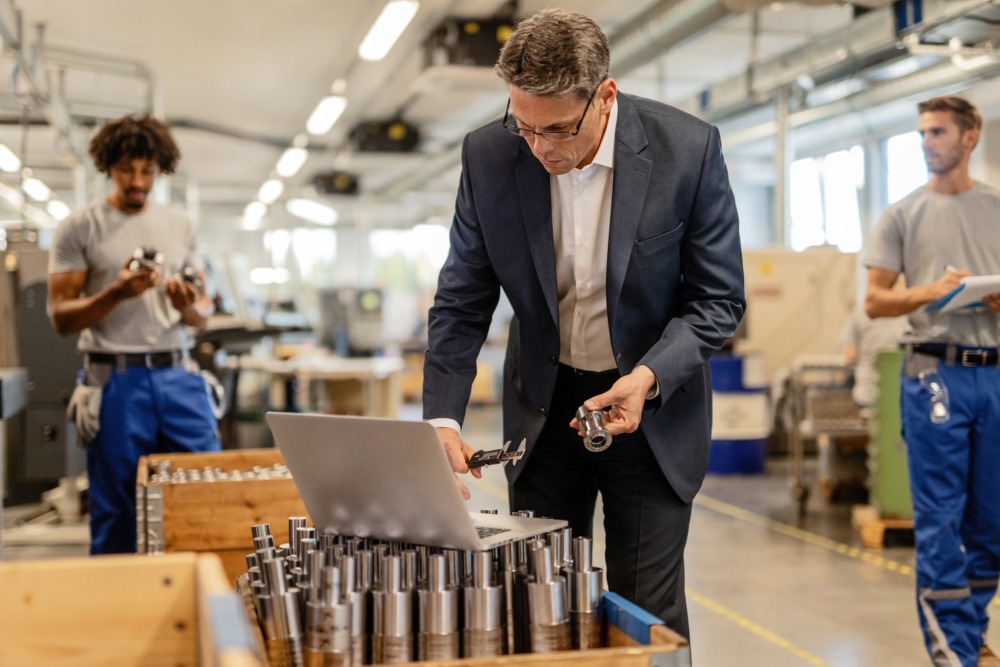Companies that are not confronting the quality problem generated by counterfeits or bogus products in their supply chain ecosystem are leaving themselves open to a world of pain.
Logistics Management reported that the prospect of counterfeits in the supply chain is an ever-growing threat, with numerous industry sectors worried about the impact that a fake could have on both consumer confidence and overall product quality. Counterfeiting is already a billion-dollar business, and it is reportedly becoming harder to differentiate the fake from the real thing.
The chances of a consumer buying a counterfeit product in the United States or the European Union are reportedly around one in 20, and around five to six percent of all branded imports are fake. A recent report estimated that the global value of counterfeiting reached $1.2 trillion in 2017, and the market for fake goods is predicted to hit $1.8 trillion by 2020. In fact, the European Organization for Economic Cooperation and Development predicts that around two percent of everything sold worldwide will be counterfeit by the end of next year.
Much of that can be attributed to the evolution of the digital marketplace, especially in the ecommerce sector. Companies spend a lot of time and resources in making sure that they have supply chain quality management processes and controls in place, but it is often hard for digital shoppers to spot bogus products on marketplaces such as Amazon where the price of a fake item may only be marginally cheaper than the original.
Ecommerce aside, there is a real concern that counterfeiting could already be a part of the supply chain.
When fakes enter an ecosystem, the network itself becomes compromised and, more often than not, the quality of a product is called into question by the end user. In most cases, this will be a consumer, but what happens if the fake element is a danger to public health? And, if a professional industrial buyer has been unable to spot the difference, what does that say about the culture of quality at a company?
With that in mind, let’s take a quick dive into how counterfeits affect quality.
Spotting fakes in the supply chain
The problem for companies and intellectual property owners – apart from the loss in revenue, naturally – is that a counterfeit product might have not only a negative effect on a brand ‘s reputation for quality, but also have far-reaching consequences within the supply chain itself.
A counterfeit part, for instance, might make it into an automobile or be fitted to household appliances. And although nobody gets on a plane and thinks about where all the parts have come from, the simple truth is that companies that have an extensive supply chain ecosystem are putting their faith in the suppliers themselves.
In recent years, the methods and tools that counterfeiters use have become increasingly sophisticated, especially in industries that rely heavily on an extensive supply chain network. Next-generation manufacturing and printing techniques, for instance, allow counterfeiters to duplicate products, labels and security codes that are almost indistinguishable from the genuine thing. While tech like 3D-printing can create unauthorized copies that may not have the same structural integrity of the original.
China remains the prime source for counterfeit products, Logistics Management said, although Vietnam and India are making waves in the fake goods sector. Consumer goods such as clothes, cosmetics, handbags, electronics and watches remain the main source of income for counterfeiters, and the average consumer is unlikely to be able to tell the fake from the real thing.

In addition, many of the orders fulfilled through ecommerce sites come from third-party warehouses and most imports pass through the customs process without being checked. The U.S. Customs and Border Patrol (CBP) reportedly captures about one percent of all fakes imported and selects between three-to-five percent of cargo shipments for physical examination, but only when the agency believes there is a good chance of counterfeit products being shipped.
Then is the matter of being liable under the Lanham Act. Otherwise known as the Trademark Act of 1946, this piece of legislation – which can be viewed in full here – is the main source of trademark infringement in the U.S. Thanks to several amendments since its enactment, the Act imposes extremely strict liability on companies that transport, warehouse or fulfill orders.
On a very basic level, if a company supplies counterfeit goods, they are liable. If that company does it knowingly, then it is a federal criminal offense that is punishable by millions of dollars in fines and jail time for any individuals involved.
The fun part comes when a company doesn’t realize that it is transporting fakes, warehousing fakes or fulfilling orders with fakes … because that company is still liable under tort law – a set of laws that are based on the idea that people are responsible for the consequences of their actions (either intentionally or accidentally) if those actions cause harm to another person or entity.
In terms of supply chain quality management and product quality, those actions become extremely relevant. Companies could purchase counterfeit parts or products that don’t perform as expected or even have a knock-on effect that causes real parts to fail for no apparent reason. All of which can result in delayed production, product failure, potential harm to an end user and an overall drop in product quality and consumer trust.
Leverage supplier quality management software to create a culture of quality.
Taking all of that into account, the risk of fake goods, parts and products entering both the supply chain and the consumer market is very real. For companies that don’t have a transparent or traceable supply chain network, the lack of control could make a huge impact on product quality and brand reputation.
So, how can companies ensure that their supply chain is not sending them counterfeit goods?
The answer is that companies need to both ask questions of their suppliers and ensure that the supply chain QMS has the right levels of functionality for the business. Creating a culture of quality ecosystem is a complex process, but the following elements should be considered from day one:
· Secure Access: Can your suppliers access only the parts of your EQMS that you need them to see, while your internal systems and data remain secure?
· Transparency: Are you able to seamlessly track supplier goods in real-time at every stage in the supply chain? Do you have complete visibility throughout your supply chain?
· Regulatory Compliance: Can your Supplier Quality Management system deliver the outputs you need to ensure your suppliers are always inspection ready?
· Harmonization: Does your Supplier Quality Management system provide you with the means to spread best practices throughout the supply chain via standardized workflows, consistent processes, and document control?
· Auditing: Does the Supplier Quality Management system automate the process of auditing and surveying risk and quality throughout the supply chain?
· Incident Management: Can your suppliers participate in your corrective action process (CAPA) in real-time? Does the Supplier Quality Management system support a risk-based approach to ensure event resolution and prevent future incidents?
· Supplier Management: Does your Supplier Quality Management system enable you to monitor supplier risk and performance employing objective metrics?
· Configuration; Is your Supplier Quality Management system fully configurable to the needs and processes of you and your suppliers?
· Integration: Can your Supplier Quality Management system link into other enterprise systems, pulling data down from these systems and then pushing information back again where necessary?
· Reporting and Analytics: Will your Supplier Quality Management system help you analyze your supplier data so that you can respond to quality issues rapidly and uncover trends to drive improvements? Does it provide user-friendly visualization tools that enable detailed analysis of supplier performance?
Ultimately, maintaining a culture of quality throughout the supply chain is not an easy task, even with this checklist.
QMS software can patch and fix holes, but companies need to be proactive and pay attention to details. Turning up at a supplier location once a year and asking if the products on display are real or fake is not enough, and companies should never take anything for granted. Consumers are often faced with the concept of “caveat emptor” – let the buyer beware – and companies should take this into account in their own supply chain transactions.
Quality matters in the fight against fakes
Sadly, the risk of counterfeits entering the supply chain is unlikely to diminish in the near future.
The customer-generated duality of increased expectations and instant gratification means that companies are under increased pressure to deliver goods and services in a timely fashion. Add into the mix the simple fact that speed-to-market is considered to be a competitive advantage, and the need to provide customers with a quality product can mean that not every part of the supply chain is scrutinized as closely as it should.
This is where a quality management system can be at its most effective. Locating fake goods and eliminating counterfeits is not easy, but if the end goal is to protect brand reputation and maintain consumer trust, then the onus is on companies to make sure that they have the right business optimization and quality tools in place throughout the supply chain ecosystem.
ETQ’s long held mantra that quality creates endless possibilities is one of the many reasons why over 550 global companies trust us to secure brand reputation and customer loyalty. Our Reliance 2019 SaaS software delivers built-in best practices and powerful flexibility to drive excellence through quality.
To find out more about how ETQ can help you on your quality journey, contact us today for a demo.




